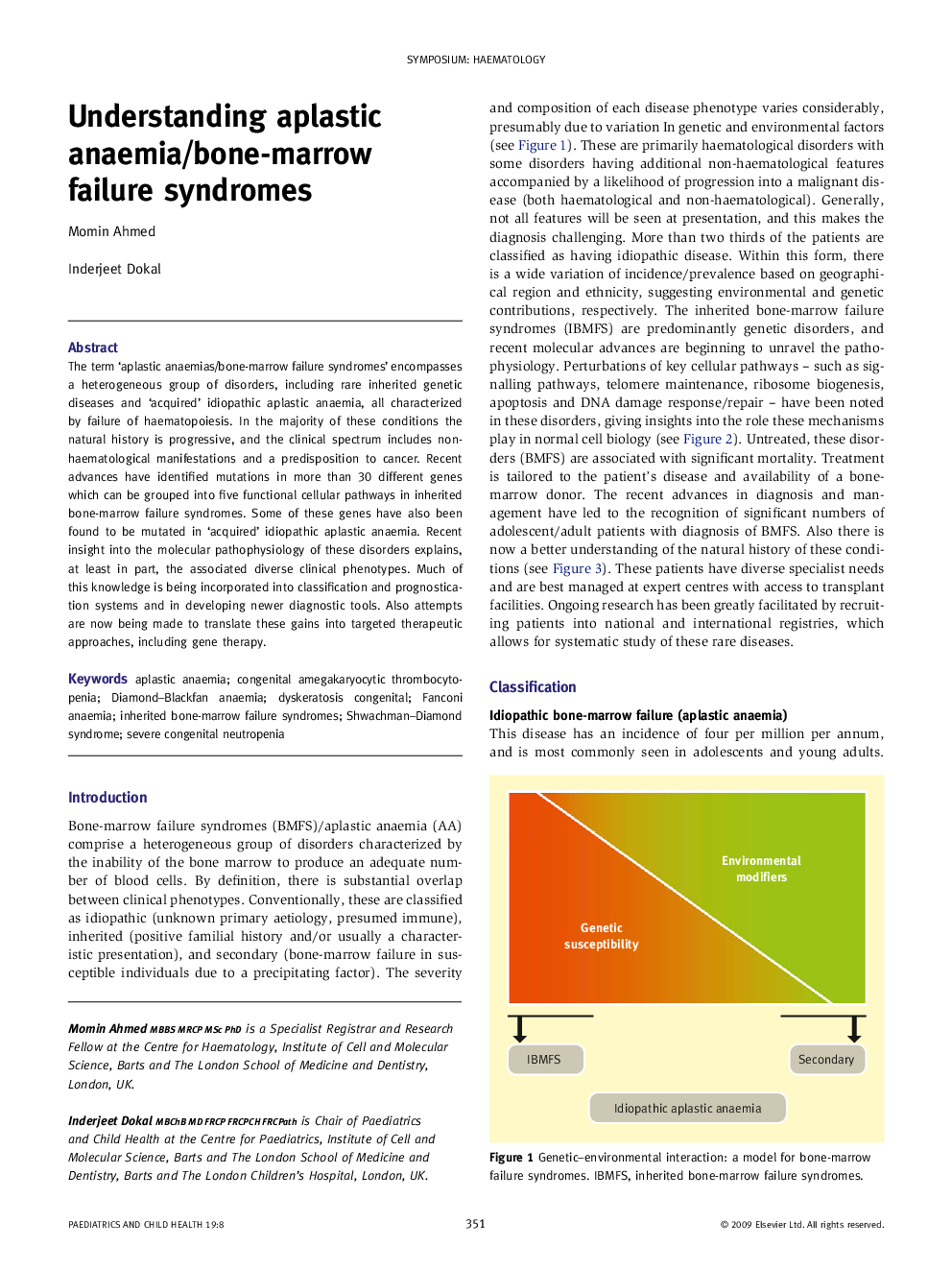| کد مقاله | کد نشریه | سال انتشار | مقاله انگلیسی | نسخه تمام متن |
|---|---|---|---|---|
| 4173285 | 1275812 | 2009 | 7 صفحه PDF | دانلود رایگان |

The term ‘aplastic anaemias/bone-marrow failure syndromes’ encompasses a heterogeneous group of disorders, including rare inherited genetic diseases and ‘acquired’ idiopathic aplastic anaemia, all characterized by failure of haematopoiesis. In the majority of these conditions the natural history is progressive, and the clinical spectrum includes non-haematological manifestations and a predisposition to cancer. Recent advances have identified mutations in more than 30 different genes which can be grouped into five functional cellular pathways in inherited bone-marrow failure syndromes. Some of these genes have also been found to be mutated in ‘acquired’ idiopathic aplastic anaemia. Recent insight into the molecular pathophysiology of these disorders explains, at least in part, the associated diverse clinical phenotypes. Much of this knowledge is being incorporated into classification and prognostication systems and in developing newer diagnostic tools. Also attempts are now being made to translate these gains into targeted therapeutic approaches, including gene therapy.
Journal: Paediatrics and Child Health - Volume 19, Issue 8, August 2009, Pages 351–357